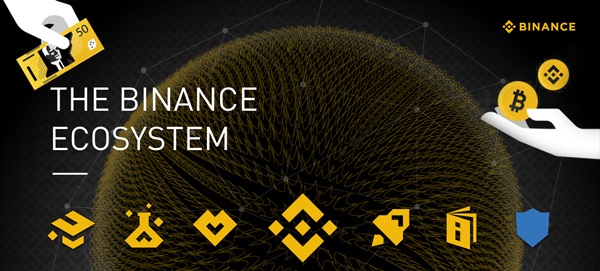
Ethereum, one of the most widely used blockchain platforms, has faced increasing scrutiny over its scalability issues, especially with the rise of Layer-2 solutions. As more users turn to platforms like Arbitrum and Optimism, questions about Ethereum’s ability to handle increasing demand have been raised. Recently, Ethereum co-founder Vitalik Buterin


 Vitalik Buterin
Vitalik Buterin
Vitalik Buterin is a well-known tech geek, influencer, and computer programmer. To promote the blockchain, he started Bitcoin Magazine and provided blockchain information for cryptocurrency investors. In 2015, he co-founded Ethereum, a blockchain platform that contributed to decentralized finance.
Quick Facts
Full name Vitaly Dmitrievich Buterin Birth 31-01-1994, Kolomna, Russia Education University of Waterloo Wife/Partner To be updated / Not Married Famous for Ethereum, ETH, Blockchain advocate/promoter Net Worth $1B (refer for realtime)
Buterin recognized the need for decentralized finance and used smart contracts to publish the Ethereum whitepaper. His contributions paved the way for Ethereum’s transition to Proof-of-Stake, which proved to be scalable and effective. Furthermore, he introduced Ether (ETH), the blockchain platform’s native coin.
A Timeline of Vitalik’s Career Co-founded Bitcoin Magazine (2011) – Established one of the first crypto publications, writing extensively on Bitcoin and blockchain.
Authored Ethereum Whitepaper (2013) – Proposed a blockchain with smart contract functionality for decentralized applications (dApps).
Co-founded Ethereum (2015) – Launched Ethereum after a successful $18M ICO, revolutionizing the blockchain ecosystem.
Developed Ethereum Virtual Machine (2015–2016) – Created the EVM, enabling developers to build and deploy smart contracts.
Worked on Ethereum Scalability (2017–2021) – Contributed to Layer 2 solutions like Rollups, Plasma, and Sharding.
Led Ethereum’s Transition to Proof-of-Stake (2018–2022) – Helped develop and implement Ethereum 2.0, merging the Beacon Chain in 2022.
Blockchain Research & Cryptography (2016–Present) – Focused on zk-SNARKs, privacy tech, and decentralized governance models.
Philanthropy & Crypto Advocacy (2017–Present) – Donated millions in crypto for pandemic relief, AI research, and financial inclusion.
Key Achievements of Ethereum’s Co-founder
Year Achievements Details 2014 Thiel Fellowship Awarded a $100,000 grant by Peter Thiel to work on Ethereum. 2018 Fortune 30 Under 30 Recognized as one of the most influential young leaders in technology. 2018 World Technology Award in IT Software Honored for contributions to blockchain and Ethereum’s development. 2021 Time 100 Most Influential People Recognized for his impact on the global crypto and blockchain ecosystem. 2022 Ethereum’s Transition to Proof-of-Stake Successfully led Ethereum’s transition from Proof-of-Work to Proof-of-Stake.
Other Useful links to connect with Vitalik Buterin
Platform Link X (formerly Twitter) https://twitter.com/VitalikButerin GitHub https://github.com/vbuterin Ethereum Official Website https://ethereum.org Vitalik’s Blog https://vitalik.ca
EntrepreneurCrypto and Blockchain Expert has offered a timely response to those concerns, especially following strong criticism from Cardano’s founder, Charles Hoskinson


 Charles Hoskinson Charles Hoskinson is an American entrepreneur and blockchain visionary. He co-founded IOHK, and Cardano (ADA), a blockchain project. He also co-founded the Ethereum blockchain platform.
Charles Hoskinson Charles Hoskinson is an American entrepreneur and blockchain visionary. He co-founded IOHK, and Cardano (ADA), a blockchain project. He also co-founded the Ethereum blockchain platform.
With the help of Cardano’s proof-of-stake (PoS) blockchain, Charles weighs on scalability, security, and interoperability to facilitate enterprise blockchain adoption. He directs research in Web3, cryptocurrency innovation, and decentralized governance through IOHK.
Quick Facts Full Name Charles Hoskinson Birth 05-11-1987 in Hawaii, United States Nationality American Education University of Colorado Boulder, Metropolitan State University of Denver Marital Status Unmarried as of 2025 Net Worth Estimated around $700 million Charles Hoskinson’s work in cryptography, digital assets, and blockchain promotion has recognized him in the crypto. His efforts in developing blockchain have greatly contributed to the advancement of DeFi and blockchain networks globally.
Charles Hoskinson – Professional Career Timeline 2013 – Co-founded Ethereum (ETH), contributing to smart contracts and decentralized applications.
2014 – Left Ethereum over governance disputes and founded IOHK (Input Output Hong Kong).
2015 – Started developing Cardano (ADA), a third-generation blockchain with a proof-of-stake (PoS) model.
2017 – Launched Cardano mainnet, introducing scalable and secure blockchain solutions.
2019 – Led Cardano’s Shelley upgrade, enhancing network decentralization and staking rewards.
2021 – Rolled out Alonzo hard fork, enabling smart contracts and DeFi on Cardano.
2022 – Expanded Web3, governance, and blockchain adoption via Cardano’s Vasil hard fork.
2023 – Advocated financial inclusion and blockchain education in Africa and developing nations.
2024 – Advanced self-sovereign identity and on-chain governance with Cardano’s latest updates.
Present – Continues shaping blockchain innovation, DeFi, and decentralized ecosystems through IOHK. He has collaborated with various tech experts and blockchain startups. Charles sees decentralized finance as a tool for financial freedom. He also educates crypto beginners through social media sites, conferences, and tech channels.
Useful Links to Connect With Charles Hoskinson Platform Link X (formerly Twitter) Charles Hoskinson (@IOHK_Charles) / X LinkedIn profile Charles Hoskinson – Self-employed | LinkedIn Cardano Foundation Cardano Foundation YouTube profile https://www.youtube.com/c/charleshoskinson Chief Executive Officer .
“I don’t think Ethereum will survive more than ten or fifteen years. The Layer-2s will drain all the value, and users will migrate elsewhere, eventually getting eclipsed by Bitcoin,” said Charles Hoskinson.
Vitalik Buterin’s Layer-Zero Update
Buterin responded directly to Hoskinson’s comments, which predicted Ethereum’s collapse within 15 years if it continued relying heavily on Layer-2 solutions. In a bid to address these scalability challenges, Buterin unveiled an exciting Layer-Zero upgrade. This proposal suggests transitioning Ethereum from the traditional Ethereum Virtual Machine (EVM) to a more efficient zkVM system, based on RISC-V standards.
The upgrade promises major improvements, including up to 832 times fewer cycles than the current EVM and a 95.7% reduction in proving cycles. These advancements are expected to increase throughput by 30 times through GPU acceleration, significantly improving the network’s efficiency. Plus, proof compression could shrink from 346MB to just 1.5MB, creating a much more streamlined system.
Also Read : Charles Hoskinson Confirms XRP Integration and Midnight Airdrop for Holders ,
A Path to Ethereum’s Long-Term Growth
However, this Layer-Zero update could potentially reshape Ethereum’s scalability, offering a new path forward that doesn’t rely on Layer-2 solutions. By improving the Ethereum base layer, Buterin’s proposal could reduce transaction fees and increase Ethereum’s competitiveness, especially against newer blockchain technologies.
While still in the proposal stage, this update could greatly enhance Ethereum’s long-term viability and set the stage for future growth, addressing both scalability issues and concerns raised by critics like Hoskinson.
Stay ahead with breaking news, expert analysis, and real-time updates on the latest trends in Bitcoin, altcoins, DeFi, NFTs, and more.
FAQs
The Layer-Zero upgrade is a proposal to transition Ethereum’s base layer to a zkVM system, improving scalability and reducing transaction costs by enhancing the Ethereum Virtual Machine’s efficiency.
Hoskinson argues that Ethereum’s reliance on Layer-2 solutions will drain its value, causing users to migrate to other platforms, ultimately resulting in Ethereum being eclipsed by Bitcoin.
Layer-2 solutions operate off Ethereum’s base layer to enhance scalability, while Layer-Zero aims to improve Ethereum’s base layer itself, offering greater efficiency and reducing dependence on external solutions.








Be the first to comment